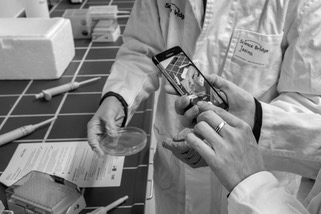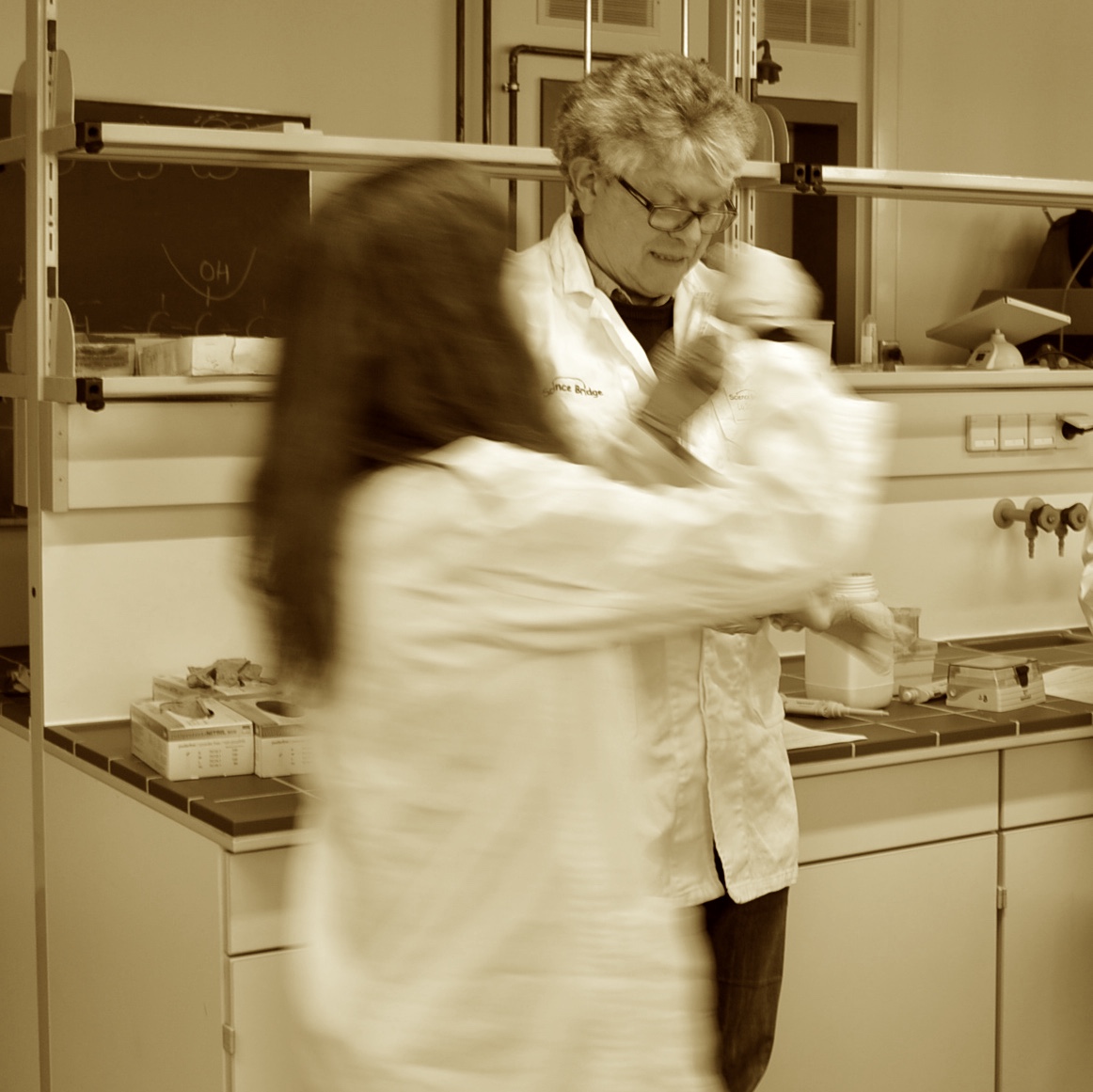News
Innovation Radar: Understanding science / Testing CRISPR-Cas9 in the lab
![]()
Last weekend, akampion went back to the lab for a day to get a first-hand experience of genome editing. In an event organized by Science Bridge e.V. and supported by DFG, Joachim Herz Stiftung and Kassel University, selected participants were able to perform genome editing on an E. coli strain.

The lab strain used is able to metabolize the colorless chemical X-Gal to a blue indigo dye, using lactase enzyme encoded by the lacZ gene. As a result, colonies growing on agar plates in the presence of X-Gal are colored blue.
Using a plasmid encoding the CRISPR-Cas9 system, a guide-RNA with a sequence specific for the lacZ gene and a resistance to chloramphenicol, the strain can be transformed so that the lacZ gene is knocked out. Successfully transformed cells will also be able to grow in the presence of chloramphenicol. In contrast to the wild type, colonies will remain white. In a subsequent PCR run, the genetic modification will show up as different banding pattern as compared to the pattern of the unmodified wild type.
Surprisingly little has changed in the lab since the 1980s. Main resources are still pipettes, Eppendorf tubes, ice baths and centrifuges. Also, basic techniques such as casting of gels, agar plating, using heat to make bacterial cells competent and restriction enzymes to digest nucleic acids, etc., are still being used. What has changed dramatically, however, is the molecular biology knowledge built on the extensive study of genomes and gene function that has been made possible by next-generation sequencing and big data and also the availability of customized plasmids, oligos, etc. to perform experiments in a simple, fast and convenient way.
The simplicity, elegance and low cost of genome editing bears the potential to take molecular biology to a next level with unprecedented advances in medicine, breeding, biochemical production and other areas – a truly transforming technology.

